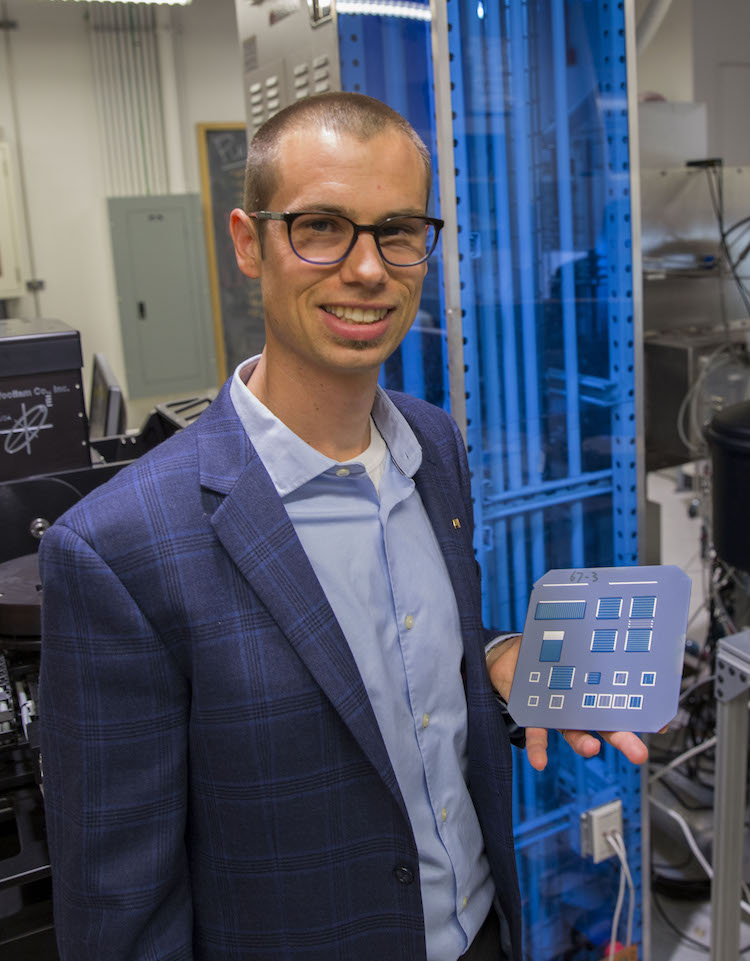
Solar advances earn Holman IEEE young professional award

Zachary Holman
Zachary Holman’s research spanning the full spectrum of solar cell technologies has made him shine as a leader in the photovoltaics community.
The assistant professor of electrical engineering in the Ira A. Fulton Schools of Engineering at Arizona State University recently was recognized with the 2019 IEEE Stuart R. Wenham Young Professional Award for significant contributions to photovoltaic energy conversion science and technology. This award is given annually by the photovoltaic section of the Institute of Electrical and Electronics Engineers.
Holman is the sixth recipient of the IEEE Stuart R. Wenham Young Professional Award and the first ASU researcher to receive the honor. The Young Professional Award was recently renamed in honor of the late Stuart Wenham, a photovoltaics research leader who made profound contributions to the field.
Holman follows in Wenham’s footsteps with a bright early career. His notable achievements include making new scientific developments and advancing performance to record efficiencies in solar cells based on silicon, cadmium telluride, perovskites and III-V materials.
His most significant contributions have been to silicon-based tandem solar cells. These types of cells stack a complementary semiconductor material on top of silicon for efficient conversion of broad-spectrum light from the sun into electricity.
“My team has mapped out the technological and economic landscapes for these types of solar cells in publications that have served as guides to the community,” Holman says.
He has also invented a new type of four-terminal tandem solar module that uses a “PVMirror” to avoid materials compatibility challenges of typical tandem solar cell structures.
For cadmium telluride solar cells, Holman collaborated with ASU Professor Yong-Hang Zhang to develop a new hole contact that broke the open-circuit voltage record by more than 100 millivolts.
Myles Steiner, Photovoltaic Specialists Conference awards chair, echoes the praise of Holman’s contributions in these areas and notes Holman’s colleagues also believe his achievements are significant and impressive.
“Dr. Holman was nominated for this year’s award by two independent sets of colleagues, which really speaks to his breadth of experience and to the impact that he has already had in the PV community,” Steiner says.
Holman’s work on new materials, processes and solar cell designs have earned many honors in his young career. In the past several years, he has been named a Moore Inventor Fellow, Trustees of ASU Professor, Fulton Entrepreneurial Professor and Joseph C. Palais Distinguished Faculty Scholar.
He has also commercialized his research, co-founding the advanced materials startup Swift Coat with a new thin-film and thick-film deposition technique called aerosol impaction-driven assembly.
Holman credits his achievements in the field of photovoltaics to his ASU team, the research facilities and community at ASU, steady financial support from the U.S. Department of Energy and National Science Foundation and high-caliber collaborators from around the world.
“Excellent partners with complementary expertise allow us to dramatically increase the scope of our research and the impact of its results,” Holman says, noting 38 out of his 40 funded projects in the last few years have been collaborative.
The IEEE Young Professional Award, which will be presented at the 46th IEEE Photovoltaic Specialists Conference in June, includes $2,000 as well as a 30-minute honorary talk at the conference. Holman will discuss his research group’s work on tandem solar cells over the past three years, the future of the solar energy industry and pressing research questions and promising approaches the community should consider.
“This award represents my own research community’s validation of my team’s contributions,” Holman says, “and that makes me grateful and proud.”



































